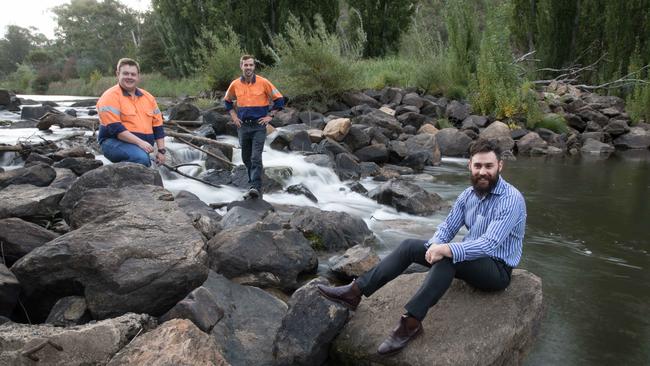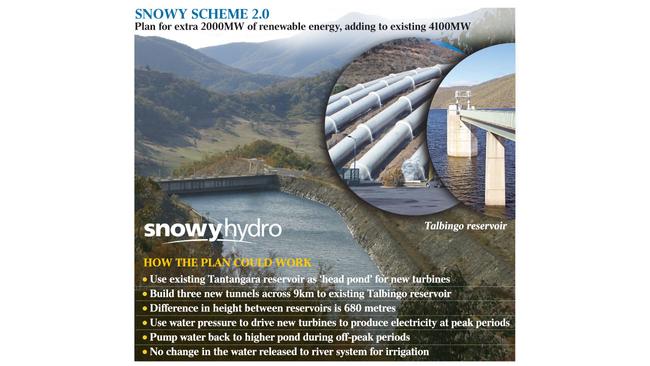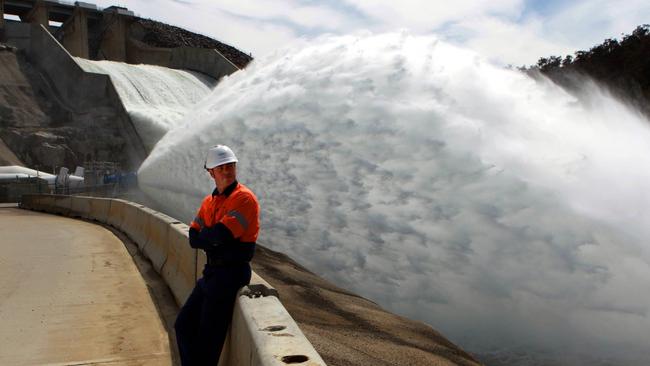Snowy Mountains fix for power crisis
The nation’s iconic Snowy Mountains power scheme will be ‘turbocharged’ with a 50 per cent increase in capacity.

The nation’s iconic Snowy Mountains power scheme will be “turbocharged” with a 50 per cent increase in capacity to guarantee more electricity for households and employers, as Malcolm Turnbull moves today to invest $2 billion to ensure energy security.
The Prime Minister will unveil plans to build a “Snowy 2.0” to power the equivalent of 500,000 homes and meet demand in peak periods across the eastern states, in the first extension of the vast hydro-electric scheme since the 1970s. The government aims to create a new power station bigger than most of the country’s existing generators, including Victoria’s Hazelwood coal-fired station, while acting as emergency storage for the entire electricity grid from South Australia to Queensland.
As Mr Turnbull vows to use “all of the powers that we have under the Constitution” to fix the nation’s energy crisis, he will launch the first steps towards constructing new tunnels and turbines in the Snowy. Today’s announcement comes after the Prime Minister put gas producers on notice the Coalition was prepared to impose tough regulations on the sector unless it ensured sufficient gas flowed to the domestic market. Securing a guarantee from energy companies that gas would be available in times of peak energy demand, the government also ordered producers to increase how much gas flowed to the domestic market as a matter of urgency.

Mr Turnbull will claim today that the 50 per cent expansion of the Snowy “will make renewables reliable” by providing storage for intermittent wind and solar power, releasing the electricity to the market when needed. “This will ultimately mean cheaper power prices and more money in the pockets of Australians,” Mr Turnbull will say, according to a draft of today’s statement.
The government will present the plan as an “electricity game-changer” that will help prevent a repeat of the outages in South Australia and other states over the summer, which have fuelled fears of shortages from a lack of investment in new generators.
Built from 1949 to 1975, the Snowy has nine power stations along a network of dams producing 4100 megawatts of electricity at full capacity. Today’s proposal will add 2000MW by using the existing reservoirs to power new turbines in a new network of tunnels, without requiring an increase in dam capacity or any change to the water released for environmental flows and irrigation.
The plans are backed by Snowy Hydro, the operator of the current scheme, but will need approval from the NSW and Victorian governments given the utility is jointly owned by the commonwealth, NSW and Victoria.
Snowy Hydro chief executive Paul Broad said the NSW town of Cooma could return to its “halcyon days” when the scheme was under construction. He predicted it would take about four years to build and have a “big impact” on the region, with “a lot more jobs” in the construction phase. “I describe it as being like the halcyon days of building the Snowy when 100,000 people lived here. This place boomed (with) the pubs and the various forms of entertainment for all the migrant workers,” he said.
Civil engineer Paul Smith, 26, who started in the graduation program with Snowy Hydro in 2015, said the opportunity to add to the “legacy” of workers gone by was “quite exciting”.
“We look after the assets, we maintain them, but this is an opportunity to add our own bit to the legacy,” Mr Smith said.
His colleague Tom Reed, a 27-year-old strategic engineer in dam safety who is in his fourth year with the Snowy, said they were always looking to maximise the scheme, but adding on a “whole new section” was remarkable.

The Prime Minister will today announce a feasibility study to map out the construction plan but the early work by Snowy Hydro suggests building three new tunnels between the existing Tantangara and Talbingo reservoirs in southern NSW.
While the distance between the two reservoirs is only 9km, the construction work would have to extend for 27km to create the three tunnels: one to send water through the turbines, one to pump water back to the higher dam and another “surge tunnel” for overflows.
The height difference between Tantangara and Talbingo is 680 metres, ensuring water pressure that can power the turbines. As with the rest of the Snowy, the electricity would be produced to meet peak demand on the grid by releasing water through the turbines.
While some of the funding for the scheme will come from the Australian Renewable Energy Agency — a federal agency the Coalition once tried to scrap — it could also be funded by Snowy Hydro itself, with the utility producing a financial return over time.
Snowy Hydro would then buy electricity or use its own at off-peak periods to pump the water back to the higher reservoir, in effect “storing” the electricity for when it is needed.
An existing part of the scheme called T3 already produces about 2000MW at this part of the Snowy and the new proposal has been dubbed “T Zero” by engineers because of its similarity to the existing turbines.
The construction is estimated to cost $2bn but the final figure would depend upon the feasibility plan.
The move comes as Mr Turnbull faces increasing criticism from Bill Shorten over rising power prices caused by shortages of gas for power stations, the closure of older coal-fired stations and the surge in demand during peak periods such as heatwaves.
The Opposition Leader labelled his opponent as “don’t blame me” Turnbull yesterday as the Prime Minister rebuked state governments for not releasing more domestic gas to keep electricity supplies up and prices down. “You’ve got to wonder why he bothers being Prime Minister if he keeps outsourcing the decisions on everything to everyone else,” Mr Shorten said.
“It is not a definition of leadership.”
While today’s announcement will only be the first step in the Snowy project, it promises to deliver 20 times the electricity South Australian Premier Jay Weatherill wants to generate from a $150 million investment announced on Tuesday in a 100MW battery storage system.
The South Australian battery scheme could last about one hour at full demand but the expansion of the Snowy would generate power for longer.
The government estimates it could provide 350,000MW/h over seven days.
The new capacity could be included in the renewable energy target — helping to reach the goal of generating 23.5 per cent of electricity from renewables by 2020 — amid continued debate about the renewables policy.
Western Sydney Liberal MP Craig Kelly yesterday repeated his call for a “freeze” in the target but made his comments on Sky News before the government’s Snowy announcement.
Mr Turnbull will paint the proposal as a way for Australians to “keep the lights on” in a way that complements wind and solar power without hurting coal and gas.
In a shot at Labor’s aspiration to generate 50 per cent from renewables by 2050, the Prime Minister will say that the Snowy plan represents “sensible” policy in contrast to “reckless targets”.


